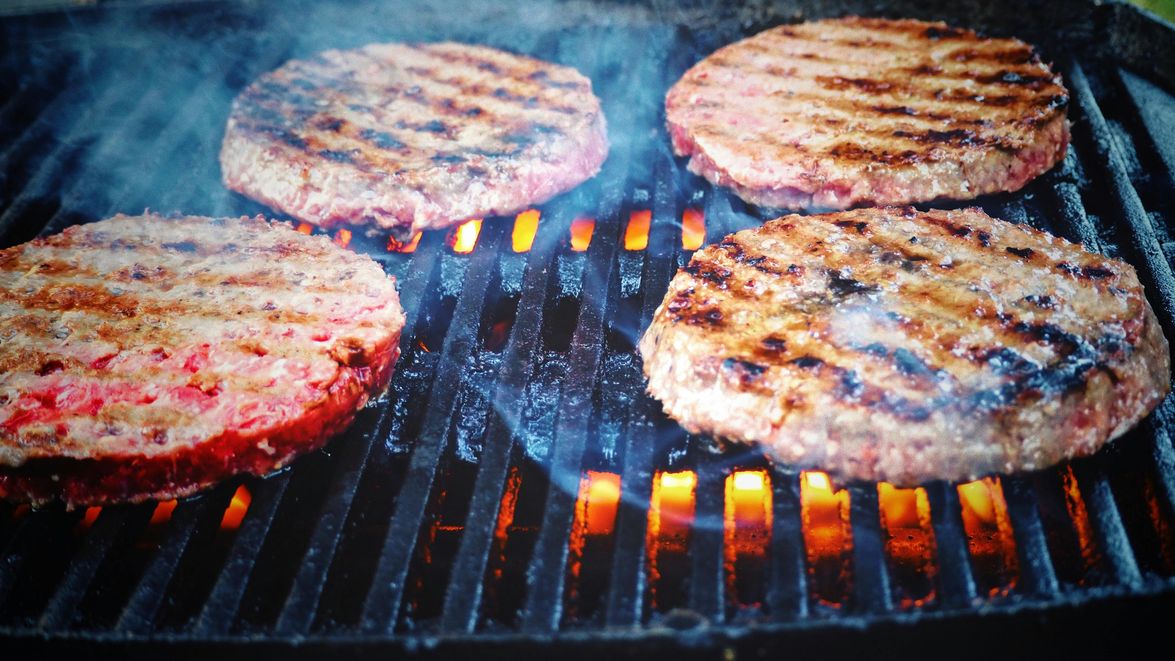
Social Success on the Carnivore Diet: Tips for Staying Committed at Gatherings and Restaurants
Social gatherings often mean a spread of carb-heavy foods and tempting desserts that can make sticking to the carnivore diet feel tricky. But with a b...

The carnivore diet is often seen as straightforward: eat meat, keep it simple. But adapting it seasonally can bring freshness, variety, and local flavor to your meals—plus, it helps support your body’s changing needs throughout the year. For women, aligning the carnivore diet with the seasons can bring benefits like enhanced energy in winter, lighter options in summer, and a more diverse nutrient intake overall.
Let’s explore how to make seasonal adjustments that keep things fun, sustainable, and nourishing!

Winter is the season for warming, nutrient-dense meats that support the body’s need for fuel. Colder temperatures often increase our caloric requirements and influence us to seek out rich, fatty cuts of meat. Think stews, braised short ribs, and roasts that offer essential fats and proteins to keep energy up and immunity strong.
Opt for fattier cuts like ribeye and brisket, or try liver and bone marrow for added nutrients. organ meats are high in vitamin A, iron, and zinc, which can help support immune function during the colder months.
Example: Make a pot of beef stew using local beef shanks and add in bone marrow for an extra dose of vitamins and minerals.
Research Insight: Studies found that consuming higher levels of animal fat in winter helps the body maintain energy balance in cold climates.
As winter transitions to spring, our bodies often crave lighter meals. Spring is a great time to incorporate lighter cuts of meat and seasonal eggs. Adding more variety with poultry and fish can bring a fresh flavor profile and support the body’s natural shift to lighter fare.
Spring lamb and eggs offer unique nutritional benefits. Lamb is rich in iron and B vitamins, while eggs provide a great source of vitamin D and choline. These foods are especially beneficial for women’s reproductive health.
Example: Create a breakfast of lamb chops with poached eggs—nutrient-dense and refreshing as the days grow warmer.
Research Insight: According to Advances in Nutrition, vitamin D from animal sources like eggs is crucial during spring when we’re still transitioning out of low-sunlight months.
In summer, our bodies crave light, easy-to-digest meals that can be enjoyed outdoors. Grilling provides a perfect cooking method, allowing for leaner cuts like chicken, turkey, and fish. Hydration becomes essential in summer, so adding water-rich meats like fish can help maintain hydration.
Fish such as salmon and mackerel are packed with omega-3s, which support brain health, while lean cuts like chicken breast or turkey help prevent that sluggish feeling in the heat.
Example: Grill up salmon fillets or chicken thighs with a dash of sea salt and lemon, a refreshing carnivore-friendly option that’s easy on digestion.
Research Insight: Studies from Frontiers show that omega-3s can help reduce inflammation, especially beneficial for women experiencing hormone fluctuations.

Fall is all about grounding, robust flavors as the weather cools and we prepare for winter. It’s a great time to experiment with game meats like venison, elk, and duck, which are rich in unique micronutrients that may not be as prevalent in more common meats.
Game meats are generally lean but packed with protein, iron, and B vitamins. They add depth to meals and are a wonderful way to explore local, seasonal meats if you live near hunting communities or farmers’ markets.
Example: Roast venison with fresh herbs for a warming, autumnal meal. Venison provides a slightly different amino acid profile, which can diversify your nutrient intake on a carnivore diet.
Research Insight: Game meats, as noted in Meat and Nutrition, contain high levels of protein and micronutrients, providing a nutrient-dense choice for seasonal variation.
Q: Why should I adjust the carnivore diet seasonally?
A: Seasonal adjustments help you source local meats and incorporate variety, which can enhance nutrition and keep the diet exciting. By eating meats that align with each season, like hearty cuts in winter or lighter options in summer, you align with natural rhythms, promoting balance and overall wellness.
Q: What are the best meat choices for winter on a carnivore diet?
A: Winter is ideal for fatty cuts like ribeye and brisket, which provide extra energy in colder months. Including organ meats such as liver can also help support immunity, as they’re rich in iron, vitamin A, and other essential nutrients.
Q: How can I incorporate more variety in the summer?
A: Summer is a great time to enjoy grilled lean meats like chicken, turkey, or fish, which feel lighter and are easy to digest in warm weather. Fatty fish like salmon also provide omega-3s, which help reduce inflammation and support hormonal balance.
Q: What types of game meats are suitable for fall?
A: Fall is a great season to explore game meats like venison, elk, and duck. These meats add variety, are nutrient-dense, and provide a unique amino acid profile to help maintain health as the weather cools.
Q: Can I adapt the carnivore diet if I don’t have access to seasonal or local meats?
A: Absolutely! While local sourcing is ideal, you can still make seasonal adjustments by choosing different cuts, cooking methods, and incorporating nutrient-rich options like bone broth or organ meats, regardless of the season.
The information provided in this article is intended for general informational purposes only and does not constitute medical or dietary advice. Every individual has unique nutritional needs, and dietary changes, especially restrictive diets like the carnivore diet, may not be suitable for everyone. Women considering the carnivore diet should consult a healthcare provider or registered dietitian before making significant dietary changes, especially when adapting seasonally, to ensure they meet all essential nutrient requirements. This article does not replace professional medical advice, and personalized guidance should always be sought to support health and well-being on any diet.
Making seasonal adjustments on the carnivore diet can help you feel more connected to the food you eat, while enhancing your health by aligning with natural cycles. From hearty winter cuts to light spring lamb, each season brings its own set of nutrient-rich options that support the body’s shifting needs.
Takeaway: Eating seasonally on a carnivore diet means embracing the variety of meats available throughout the year, which can make the diet more enjoyable and nutritionally diverse.
Embrace it: Seasonally adapting your diet connects you with local food sources, brings freshness to your meals, and helps you feel balanced year-round on the carnivore diet.

Social gatherings often mean a spread of carb-heavy foods and tempting desserts that can make sticking to the carnivore diet feel tricky. But with a b...

The carnivore diet has become increasingly popular, but like any extreme dietary approach, it raises important questions—especially for women concerne...

The carnivore diet has gained attention globally, but women’s experiences and cultural approaches to animal-based eating vary widely depending on wher...

Living with Chronic Obstructive Pulmonary Disease (COPD) can make everyday activities feel like a marathon, especially for women who are juggling heal...

recovering from COVID-19 can be a long journey, especially for women who may face lingering symptoms like fatigue, brain fog, and muscle weakness. Whi...